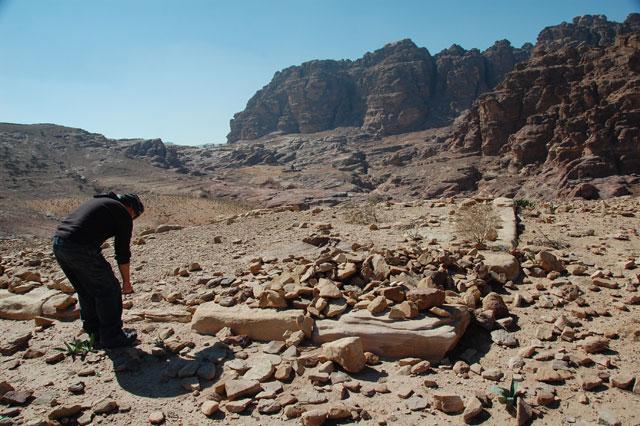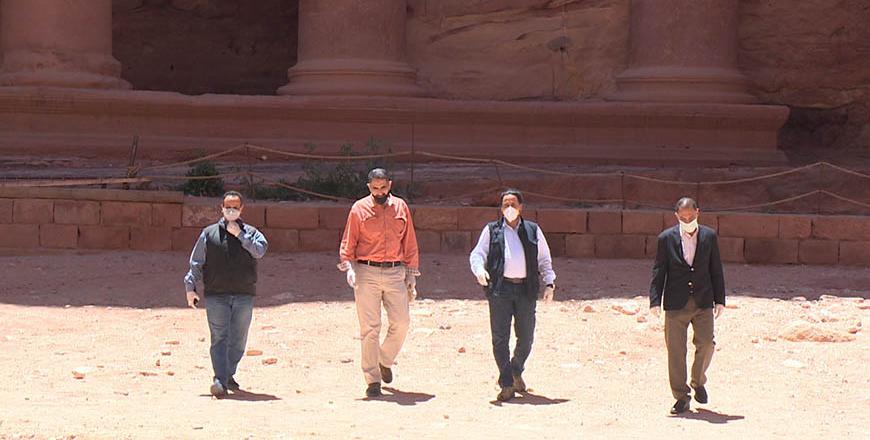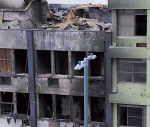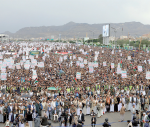You are here
New Petra discovery sheds light on city’s untapped treasures
By Dana Al Emam - Jun 11,2016 - Last updated at Jun 11,2016

Petra’s treasures are only partly tapped but the ancient city is not a priority for authorities in terms of new excavations (Photo courtesy of Ahmed Haleg)
AMMAN — The discovery of a new monument in Petra is an opportunity for archaeologists to further excavate plenty of undiscovered sites in the rose-red city, according to experts.
However, authorities in Amman did not sound very enthusiastic about the new discovery, citing the fact that Petra is an established attraction and is a low-priority site when it comes to new excavations.
The newly discovered structure consists of approximately 56X49-metre platform that encloses another smaller platform originally paved with flagstones and is located almost 800 metres south of the centre of the ancient city, according to a recent report published by National Geographic.
Archaeologists Sarah Parcak, a National Geographic fellow, and Executive Director of the Council of American Overseas Research Centres Christopher Tuttle were behind the satellite discovery of the structure.
Commenting on the breakthrough, Petra Development and Tourism Region Authority (PDTRA) Chief Commissioner Mohammad Abbas Nawafleh said only 18 per cent of sites in Petra are discovered, as the majority of the city is underground.
“There are always new discoveries in Petra,” he told The Jordan Times in a phone interview on Saturday, but said the high exposure would encourage further archaeological missions from the American and European universities, adding that the full story of the site will unfold as excavation progresses.
Described in the report as “a first for Petra”, the discovered platform is said to have no known parallels to other structures in Petra, and it likely had a public ceremonial function.
The site has not been excavated yet, but the presence of surface pottery that dates back to the mid-second century BC suggests that construction of the structure was carried out during the Nabataeans’ early public building programme, according to the report.
But new regulations at the Department of Antiquities (DoA) require archaeologists to provide a proposal for a comprehensive excavation project with a long-term action plan in order to obtain a permission for excavation, said DoA Director General Munther Jamhawi.
He added in remarks to The Jordan Times that the department has not received any proposal yet, noting that analysis of satellite images does not provide much information on the site.
Jamhawi said the department knew about the platform two years ago through aerial photos but did not give excavation permits, as Petra is currently “not a priority” when it comes to excavating new sites.
He explained that the discovered sites in Petra are more than enough to make it a site for touristic attraction; therefore, excavation efforts target other locations in the Kingdom to increase their touristic value.
Issuing excavation permits, according to Jamhawi, requires budget allocations and entails rehabilitation and reconstruction liabilities and responsibilities that are not affordable in light of the department’s limited resources.
The geophysical survey and satellite images of the site only provide predictions, said Imad Hijazin, PDTRA vice-chief commissioner and commissioner of the Petra Archaeological Park, agreeing with Nawafleh, that excavations would provide more information on the platform and its usage and life of Petra dwellers at that era.
However, the discovery raises questions regarding the ability to protect archaeological sites in Petra against human and natural forces of destruction, adding that there are some 800 discovered archaeological facades in the rose-red city, one of the modern world wonders.
Related Articles
AMMAN — The recent discovery of a hidden monument in Petra could help solve some of the mysteries of the Nabataean city, experts said on Mon
AMMAN — The rose-red city of Petra will witness archaeological excavations to unearth the front courtyard of the Treasury, Petra’s iconic fa
AMMAN — Albanian President Bujar Nishani and First Lady of Albania Odeta Nishani visited the ancient city of Petra, 235km south of Amman, on


















